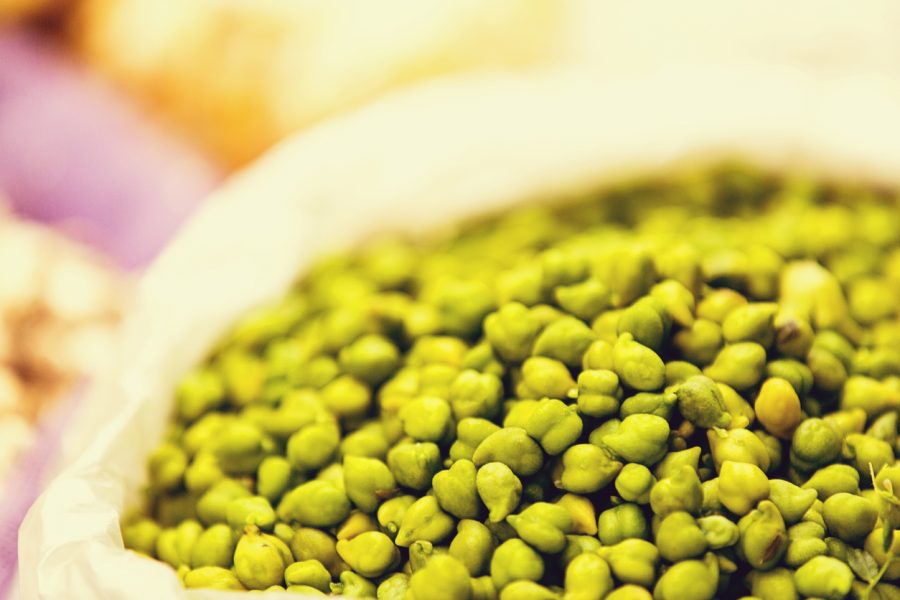
Scientists stumble upon traits that boost chickpea production, make it climate-smart

Whether in a mouth sweetener exchanged during celebratory occasions like Deepawali, an ingredient in the self-enterprise of pakora-vending that got the Prime Minister’s endorsement, or an accompaniment to meals, chickpea or ‘chana’ touches us in different ways. It is the most consumed pulse in India, supplying protein to those who shun meat.
Now, 57 researchers from 41 organisations and 11 countries, led by Hyderabad-based Icrisat, have analysed the genomes of 3,171 cultivated and 195 wild species of chickpeas and identified 1,582 novel genes with traits that can not only help improve yield but also provide resilience to climate change. The study was published in the scientific journal Nature on 10 November.
Icrisat had published the first single reference genome of chickpea in 2013. But many genetic variations that were not detected have now been discovered.
Also read: Meat on the plate? Livestock rearing for food major cause of climate crisis
“It will change the landscape of chickpea breeding,” says Rajeev Varshney, research programme director at Icrisat and leader of the study. “The next challenge,” he says, “is for breeders to be trained to use the information for crop improvement.”
Varshney was excited that a study of an “orphan crop” like chickpea which does not get as much research funding and attention as rice, wheat and maize, was published in a reputed journal.
The chickpeas that were sequenced represent the global composite collection and were selected from about 20,000 ‘landraces’ or traditionally-grown varieties that Icrisat has in its gene bank. They are foundational for the elite varieties that breeders have developed over the decades for yield, but lack the genetic variety that makes them sturdy.
Alongside, an analysis of sequencing data of 129 varieties which farmers grow in various countries and an evaluation of their agronomic performance at six locations in India over two years has confirmed that they have gene combinations that make for superior performance. The study identified 56 landraces with such gene combinations that are not present in the ‘elite’ varieties which farmers grow and can be introduced in them. It has proposed three breeding techniques based on genomic prediction to improve 16 traits. These approaches are expected to redefine chickpea breeding strategies not only for yield but also for protein.
Also read: Pineapple agroforestry can tackle climate change and biodiversity loss: Study
Varshney says breeders focus on the accumulation of genes with good traits in elite varieties. His study has identified deleterious or “bad” genes that undermine plant performance and need to be purged or silenced.
The study affirms the origin of chickpea in the Fertile Crescent (the region between Iraq and Egypt) and identifies two paths of its migration to the rest of the world: one to South Asia and East Africa and the other to the Mediterranean probably via Turkey and to the Black Sea and Central Asia (up to Afghanistan).
For NP Singh, the study would help to “rehabilitate’ chickpea in the northwest plain zone of Jammu, Punjab, Haryana, northern Rajasthan and western Uttar Pradesh from where high-yielding rice and wheat displaced it during the Green Revolution. The current average yield of about one tonne per hectare is not remunerative for wheat farmers to shift out, he says. If yields went to 2.5-3 tonnes they would be tempted to, says Singh, vice-chancellor of Banda Agricultural University, who until last month was director of the Kanpur-based Indian Institute of Pulses Research (IIPR). He was also national coordinator for chickpea breeding for eight years. Yields that are double the national average have been achieved in Andhra Pradesh and the Malwa region of Madhya Pradesh. Singh says the market for large-seeded Kabuli chickpea is three times the size of desi varieties. A variety which IIPR has developed has a weight of 60 grams per 100 seeds. Large-seeded Kabuli chana has high export demand. If made frost-resistant it could be grown in northwest India.
The production of chickpea doubled from 5.5 million tonnes during the middle of the last decade. The pulses revolution in India is largely a chickpea phenomenon. This has been made possible by the adaptation of chickpea, which was a north Indian winter crop to the warm climates of central and southern India. The chickpea varieties cultivated in northern India thrived in cold winters and matured in about 150 days. In south and central India, the winters are short. The crop faces hot and dry weather as it matures. It is likely to be attacked by pod borers and wilt.
Also read: Indian researchers discover new way to solve food crisis by mangroves
Because of efforts by Icrisat and the research centres of state agricultural universities at Jabalpur, Guntur, Nandyal, Sehore, Akola and Rahuri, coordinated by IIPR, Kanpur, chickpea has made up for the loss of area in northern India.
In Punjab, chickpea area averaged 3.2 lakh ha between 1971 and 1980 fell to about 4,400 acres during 2001-10. Now it does no figure among the major chickpea-producing states. The area in Uttar Pradesh has declined to a third of its 1971-1980 level. But the country’s chickpea area of 7.5 million ha in 1971-1975 has increased to more than 8 million ha.
Chickpea is cultivated in about 50 countries, but India is the biggest of them all, accounting for 65 per cent of the total output. The pan-genome analysis should spur innovation and make chickpea more than an item of occasional consumption to those who cannot afford it now.


